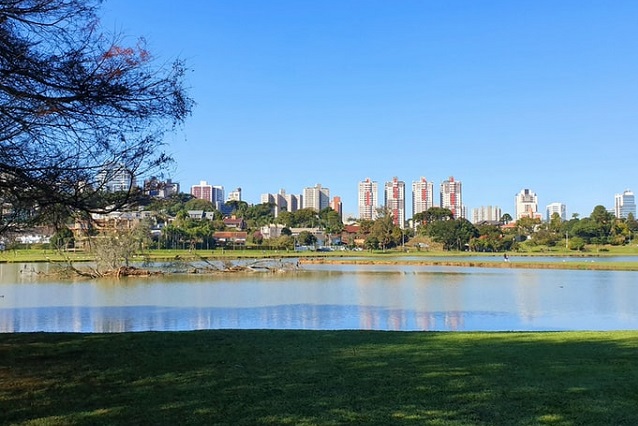
Jaime Lerner passed away on May 27, 2021. A world-renowned Brazilian urbanist, he was three times mayor of Curitiba and two times governor of the southern state of Paraná. Besides his great ideas, he was a very kind person and a political powerhouse, a combination that led to not only innovative ideas but successful implementation of those ideas.
Lerner and his team of outside-the-box thinkers, architects and engineers developed Curitiba’s 1968 Master Plan, which transformed the city into a sustainable, thriving, efficient place to live. Curitiba is often listed as one of the most sustainable cities in the world and is arguably the greenest city in a middle-income country. Lerner’s ideas confronted the modernist tradition of very segregated land uses connected by highways, led by Lucio Costa and other followers of Le Corbusier and Frank Lloyd Wright, by integrating mixed uses with mass transit, green space, and public spaces, creating a more human-scale city.
Lerner, along with planners at IPPUC, Curitiba’s planning department, pioneered the concept of priority lanes and pre-paid bus stops, making buses work like a “metro-on-the-surface” in what we now know as bus rapid transit (BRT). But the Curitiba bus lanes were not just a mass transit system, they were an integral part of a transit-oriented development (TOD) scheme that used the “trinary system,” in which higher density was allowed and encouraged along mass transit corridors, with parallel roads for general traffic and progressively declining building heights as you move further away.
Lerner’s contributions in “urban acupuncture,” went way beyond BRT and TOD, and they evolved over time to the point that he was recognized by Planetizen as the second most influential global urbanist (behind Jane Jacobs) for the simplicity and power of his ideas. He saw the city as a solution, not a problem, and not only proposed but implemented concepts like mixed use, proximity, reducing car use, and increasing green space and recycling that are now the building blocks of the New Urban Agenda, the circular economy and the “15-minute” city. Lerner always focused on low-cost, high-impact interventions, and rejected complexity. In a TED Talk, he described the car as the person invited to the party who never wants to leave, drinks and coughs a lot, and only talks about himself. “He carries only one or two people and he asks always for more infrastructure… He is very demanding.”
After Curitiba, 176 world cities, including Bogotá, México City, Rio de Janeiro, Beijing and Ahmedabad, applied the BRT concepts pioneered by Lerner and his team. In 2012, when many cities were implementing new bus systems, he urged more focus on improving and maintaining quality through frequent and reliable service. Nevertheless, his words were unheeded by many, and in 2016 CityLab Latino questioned if Latin America’s romance with buses was fading, as quality declined and more politicians began promoting rail systems.
There is wisdom in the words of Lake Sagaris, a researcher at the Catholic University in Chile, when she claims that BRT systems in the region have not been able to capture the hearts and minds of users. Recent social unrest in Bogotá that targeted BRT stations and buses can be partially explained by this lack of connection to user needs.
But these problems are not intrinsic to BRT, just as difficulties with New York or Mexico City’s Metros are not intrinsic to rail. They are the result of a long chain of unfortunate decisions and funding and institutional limitations.
For instance in Bogotá, once heralded as a model, BRT expansion was halted after 2012 and only 113 of 388 planned kilometers have been implemented (66 of 228 miles). Operational issues and lack of timely infrastructure maintenance and fleet replacement resulted in rapid decline in user satisfaction ratings. Meanwhile, the city shifted its attention to the implementation of a new, integrated public transport system, SITP, and construction of its first metro line.
I must say that we have failed to address Jaime Lerner’s recommendations about one of his most lasting legacies. We have not addressed service quality in our mass transit systems. We have failed our younger generations and women, who demand more inclusive cities with better opportunities for all. But as Lerner did, I maintain my optimism: The city is the solution, not the problem. BRT planners have not called for ample and effective participation; cities have not followed through on promised investments. But this can change. And jointly we can find our way out to a better future through dialogue and effective action.
Darío Hidalgo is a Sustainable Mobility Expert based in Bogotá.








